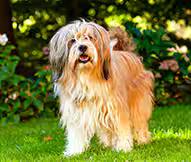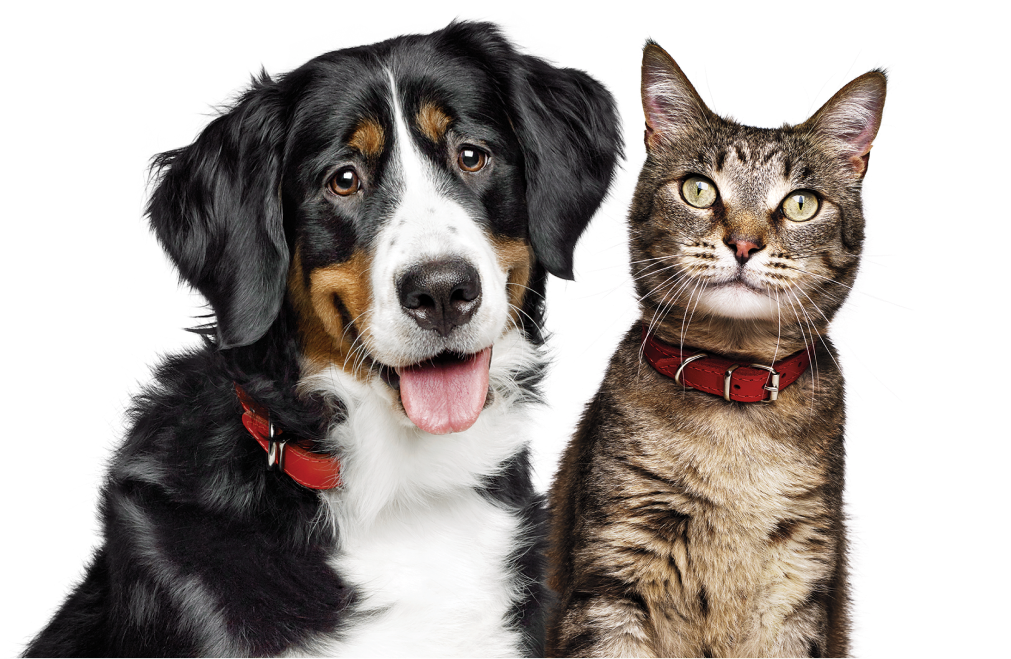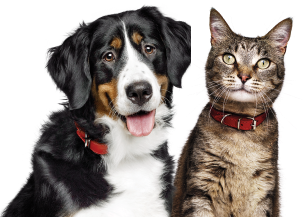Tibetan Terriers are generally friendly in nature and can be comfortably socialised with other pets or family members. Whilst they may be reserved with strangers, this dog breed has a keen sense of awareness which makes them naturally protective of those they form a bond with. Over time, they are able to pick up on the emotions of their owners and respond to their needs.
This independent and intelligent trait can sometimes manifest as stubbornness, but when properly socialised, Tibetan Terriers make for a charismatic canine companion.
Living with a Tibetan Terrier is a playful and loving experience, where the dog is a cherished member of the family.
This breed enjoys walks and outdoor time just as much as a cosy evening at home, so with sufficient attention they are a content and happy dog.
Due to their distinctive double coat, Tibetan Terriers are high-maintenance when it comes to their grooming needs. Frequent brushing will be essential to prevent matting with occasional professional grooming needed for trims and shaping.
When it comes to dietary needs, Tibetan Terriers are generally not picky eaters. A high-quality, balanced diet, along with portion control to prevent obesity, is recommended for maintaining their overall health and wellbeing.
Recommended Diet:
Puppy: Hill's Science Diet Puppy Medium Breed Dry Dog Food
Adult: Hill's Science Diet Adult Medium Breed Dry Dog Food
Mature: Hill's Science Diet Adult 6+ Senior Medium Breed Senior Dry Dog Food
Often known as the Tsang Apso, the Tibetan Terrier is an amazing breed with a history going back over 2,000 years in Tibet. Whilst this alternative name "Tsang Aspo," does not directly translate into a specific meaning, it does provide indication into the breed. "Tsang" refers to the region in Tibet where the dog breed originated from and "Apso" as a term, roughly means "long-haired " or “shaggy bearded dog”.
Serving as loyal friends to Buddist monks, they were even considered as a symbol of good luck. They were bred within monasteries, developing a thick coat, ideal for the harsh Tibetan climate.
In the early 20th century, the Tsang Apso dog breed was first brought to England, and from then on was renamed Tibetan Terriers, offering a nod to their original home as they gained popularity in the western world. They remain a popular dog breed to this day for the very reasons Buddist monks chose them for companionship; loyalty.
Health Concerns:
Tibetan Terriers are known to be susceptible to several eye conditions, and it's important for potential owners to be aware of these.
The most common eye issues for this dog breed include:
• Progressive Retinal Atrophy (PRA) - a genetic eye disease that affects the retina, leading to progressive vision loss and, in severe cases, blindness.
• Hip dysplasia: a condition that alters the inner workings of the hip joint.
• Canine Multifocal Retinopathy (CMR) - an inherited eye disease that affects the retina and can cause varying degrees of vision impairment.
Prevention is often the best medicine for ensuring your Tibetan Terrier leads a full, healthy life, and regular veterinary check-ups will be crucial to ensure health evaluations of the eye can detect signs of these conditions early on.
Genetic testing is also a recommended option as it can help identify whether your dog is a carrier of these eye diseases. This can also help to influence any breeding decisions which may affect future generations of the beloved Tibetan Terrier.
It is worth noting that not all Tibetan Terriers will develop these eye conditions, but understanding the potential risks allows owners to be proactive in monitoring their dogs' eye health.
In addition to regular veterinary care, owners can take preventive measures to support their Tibetan Terriers' eye health. This includes providing a nutritious diet rich in antioxidants and omega-3 fatty acids, which can promote ocular health.
Maintaining a clean living environment, free from potential eye irritants, is also beneficial.
It is advised that any prospective pet parents are aware of potential health challenges faced with this breed and that you do your own research before ownership.






















